New Boston Historical Society
New Boston, New Hampshire
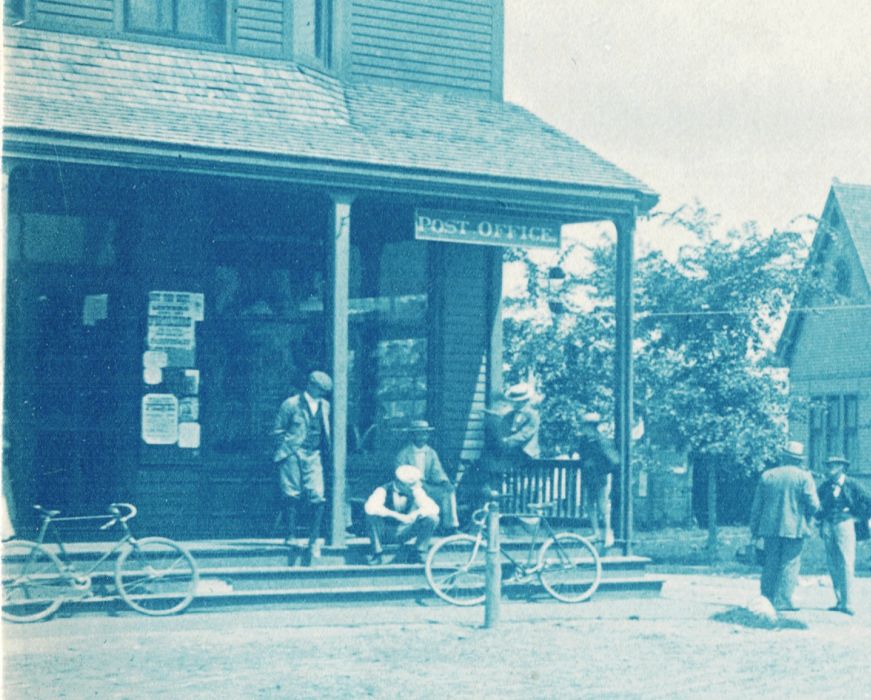
Atwood's General Store - 1899
Bicycles of New Boston
New Boston is a town of hills and valleys, and you would not think the terrain is well-suited for two-wheeled vehicles powered only by leg muscles. However our town was not immune to the bicycle craze which swept the nation in the 1880s and 1890s. Two million bikes were sold in America in 1897 alone, during the "Golden Age" of bicycles.The first pedal-powered bicycles were called "velocipedes", a made-up word implying "swift of foot". Early models were also called "boneshakers", as they were made entirely of wood or wood and iron, with no suspension or rubber tires to cushion the ride. A famous example of a boneshaker was seen in New Boston every 4th of July for many years.
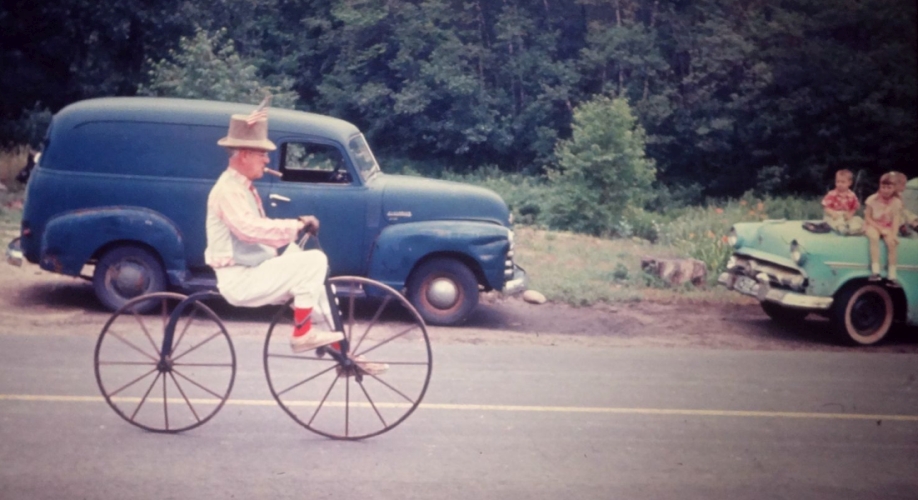
Reggie Hayes rides his 1861 "boneshaker" down River Road in a 1964 parade.
Note that the pedals of the boneshaker are attached directly to the front wheel, like a child's "Big Wheel" tricycle, which made steering difficult. There are no gears, so pedaling uphill was hard work, and no apparent brakes, which meant that going downhill was an adventure.
 Velocipedes were expensive, uncomfortable, and difficult to ride, which limited their popularity.
Compare Reggie's 1861 boneshaker to the "safety bicycles" which you see in the photograph at the top of this page,
which is from the photo album described in "New Boston in 1899".
Velocipedes were expensive, uncomfortable, and difficult to ride, which limited their popularity.
Compare Reggie's 1861 boneshaker to the "safety bicycles" which you see in the photograph at the top of this page,
which is from the photo album described in "New Boston in 1899".Innovations which made the safety bicycle more practical (and safer) included a chain drive to the rear wheel, which enabled free-wheeling and multiple gears, improved brakes, lightweight steel frame and spoked wheels, and air-filled rubber tires.
New Boston Argus July 11, 1891 — "Bicycle riding here is all the fashion."
Prior to the invention of the bicycle, the only personal transportation available to the average citizen was the horse. You either walked somewhere, at three miles per hour, or you rode a horse, and most people walked rather than rode. That is because a horse is an expensive animal, and rather inconvenient to use — a horse needs to be saddled, shoed, exercised, cleaned, rested, fed, and watered.
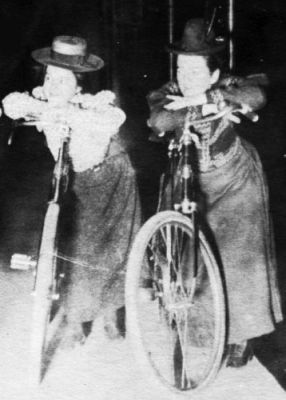 A bicycle, on the other hand, is relatively inexpensive, requires little maintenance, and does not go galloping off when it is spooked by a loud noise.
The 1880s "safety bicycle" revolutionized transportation — at least until the availability of the first affordable motorcars, like the Ford Model T.
A bicycle, on the other hand, is relatively inexpensive, requires little maintenance, and does not go galloping off when it is spooked by a loud noise.
The 1880s "safety bicycle" revolutionized transportation — at least until the availability of the first affordable motorcars, like the Ford Model T.
New Boston Argus July 7, 1894 — "While riding on the river road, Mrs. Warren in passing a team [of horses] with her bicycle, ran into the river and damaged her dress, besides receiving a dash of water over her. She was fortunate to escape greater injury to herself and wheel."
Bicycles provided mobility to the dapper gentlemen in the photo at the top of the page, and the lightweight, affordable mode of transport also gave ladies more independence. You might hop on a bike to visit a friend or go to the library or a store, possibilities that were unthinkable when you had to walk everywhere. Susan B. Anthony believed that bicycling "has done more to emancipate women than anything else in the world."
The two women in the undated photo to the right are resting on the front porch of C.H. Dodge's brick store. Over time, lady cyclists abandoned ankle-length dresses for more practical trousers called "bloomers".
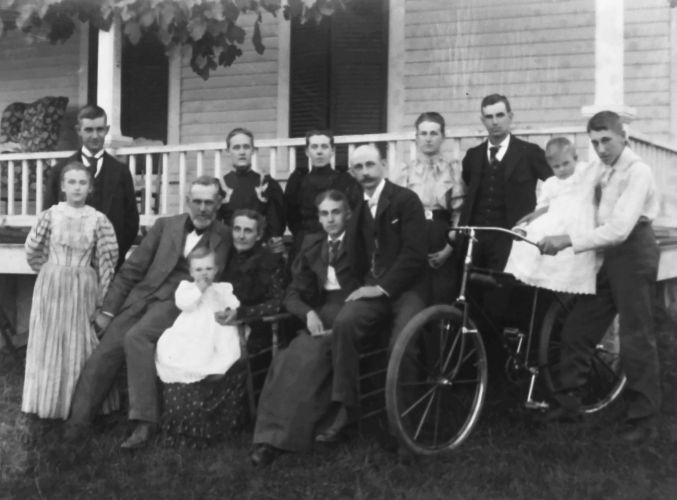
The Atwood family and bicycle — New Boston 1894
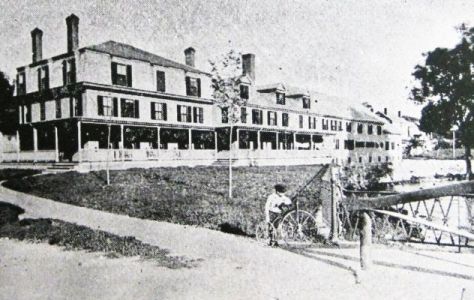

Then & Now: A young man stands with his bicycle beside the bridge near The Tavern,
and a young lady waits for a bike ride on the Rail Trail.
Two 21st-century innovations have changed bicycling in New Boston:
One is the availability of "e-bikes," which have batteries and electric motors to provide assistance when needed for New Boston's hills. This makes bike-riding more enjoyable for the elderly; I imagine that Mrs. Warren, who plunged into the river in 1894, is by now an enthusiastic e-bike rider.
The second development is the New Boston Rail Trail, which follows the right-of-way of the New Boston Railroad (1893-1931). One half of the 3-mile trail was graded and graveled in 2017; when it is completed, you will be able to ride rail trails from New Boston all the way to Manchester, NH.
— Dan R. 2018
